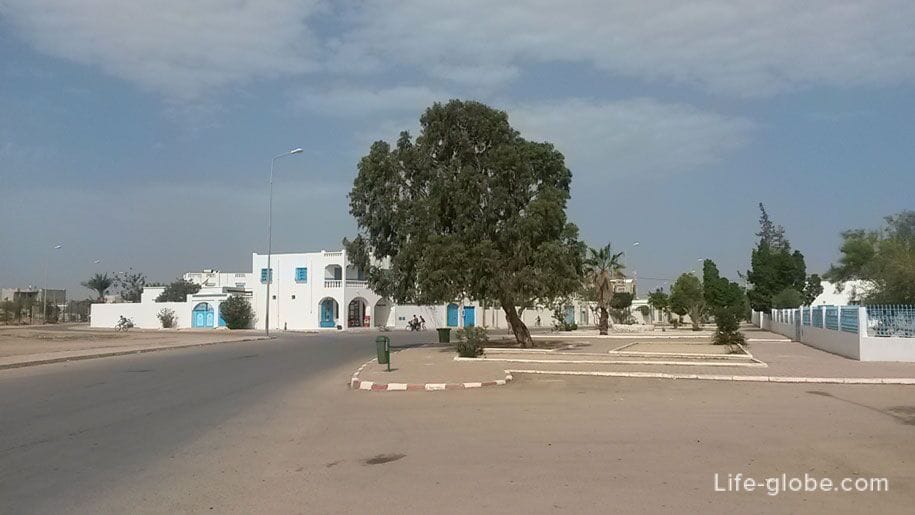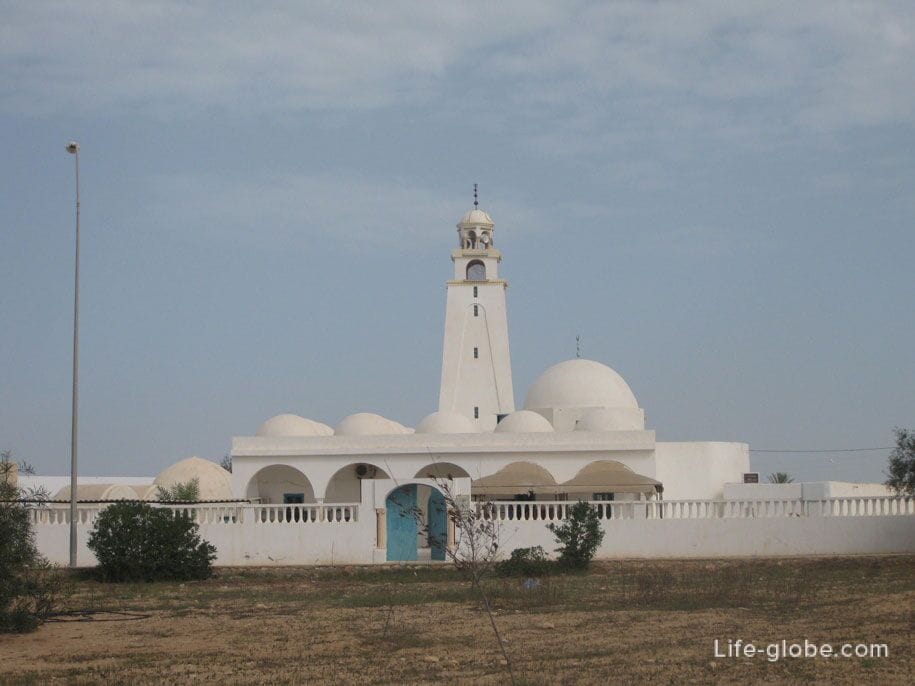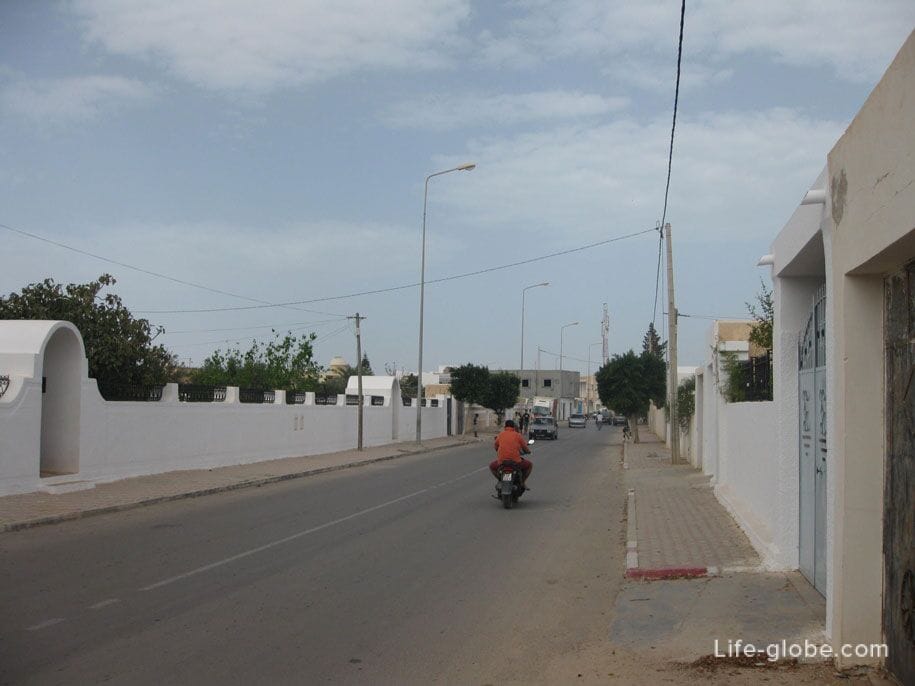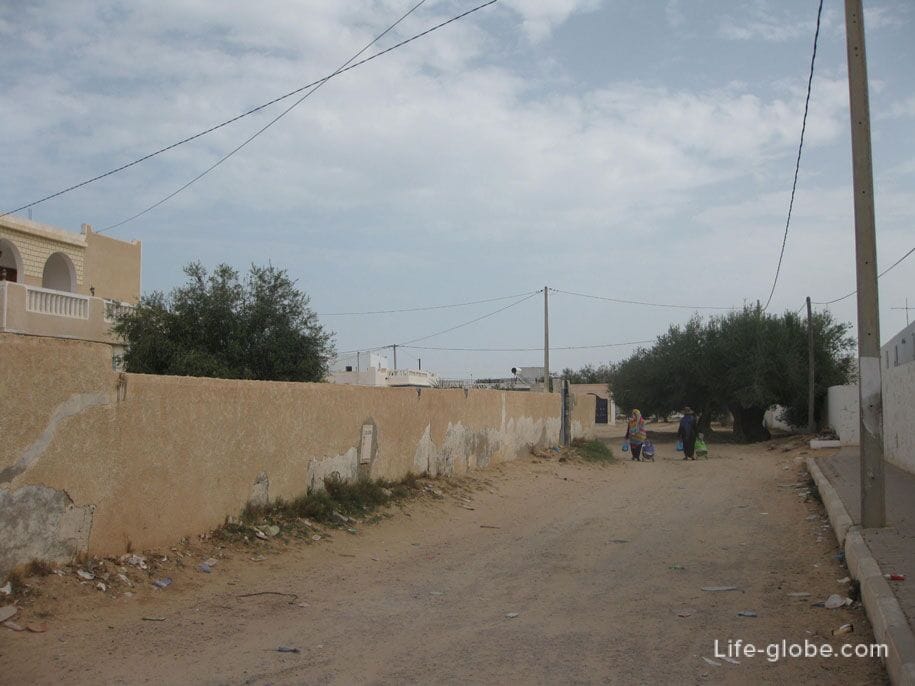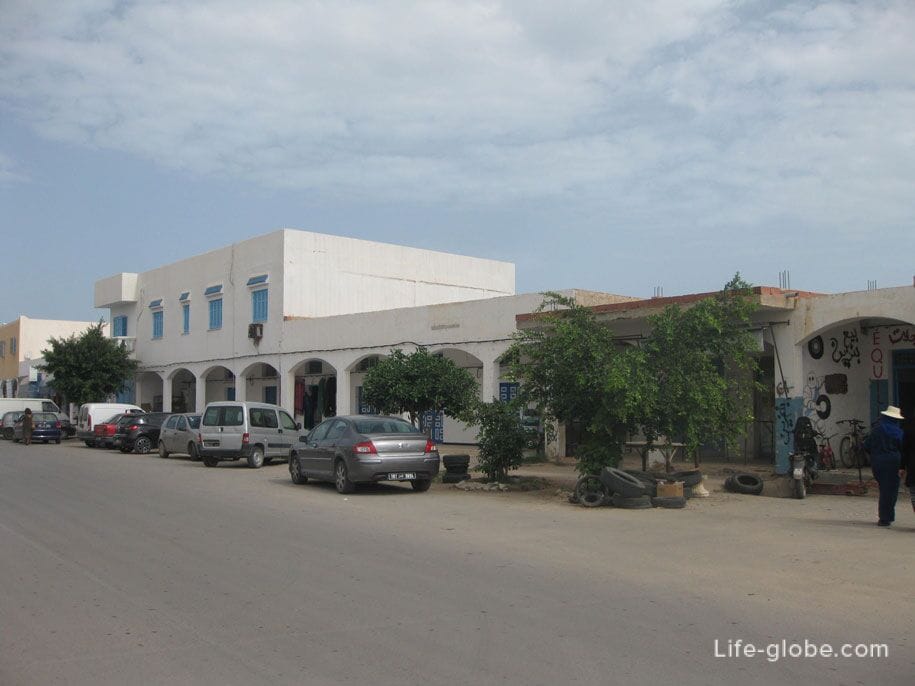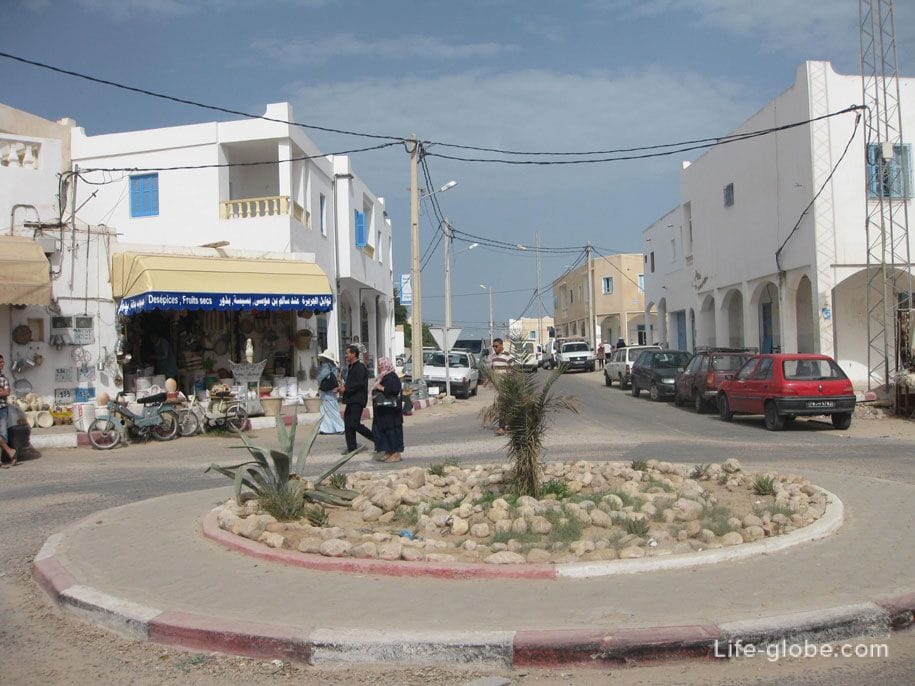
One of the main and ancient sites of the Tunisian island of Djerba, certainly deserves attention, is the synagogue El ghriba, Djerba, el ghriba (Synagogue La ghriba).
In addition, this synagogue is not only one of the most ancient sites of the island but also the oldest synagogue in Africa and one of the oldest in the world, the synagogue has more than 2 000 years. According to some historians, the synagogue was built in the 6th century BC, but the exact date of construction of the so-called and fails. Of course, the building, which is over two thousand years to the present day has not been preserved. The synagogue, which we can see today was built in the XIX century and was replaced by a building of the XVI century. All that remains from such an ancient synagogue is the story and part of the basement that is directly under the feet when we are in the temple.
The synagogue El Mushroom in the village Riyadh/Er Riadh, on the outskirts of the village centre. Earlier, the village of Riyadh was a Jewish village and was called Hara-Srira. Hence the emergence of the synagogue would seem in such a strange place, on a small island of the African continent.
To visit the synagogue with a guided tour, while paying more than 25 bucks per person. Often a tour in the synagogue of firms combined with visits to other island attractions: ethnographic Museum in the village of Hellala (better known as the village of potters), the ancient Roman road connecting the island with the mainland and the Bazaar in the island's capital Houmt Souk. Or to go independently by taxi, the fare of taxi depends on the distance of approximately 6-10 Dinar.
The entrance to the Jewish Shrine through a small security booth, which inspect things, and there are metal detectors.
Outside the synagogue is unremarkable, white building with blue door and shutters on the Windows. Not knowing that it was the famous synagogue, and passed by.

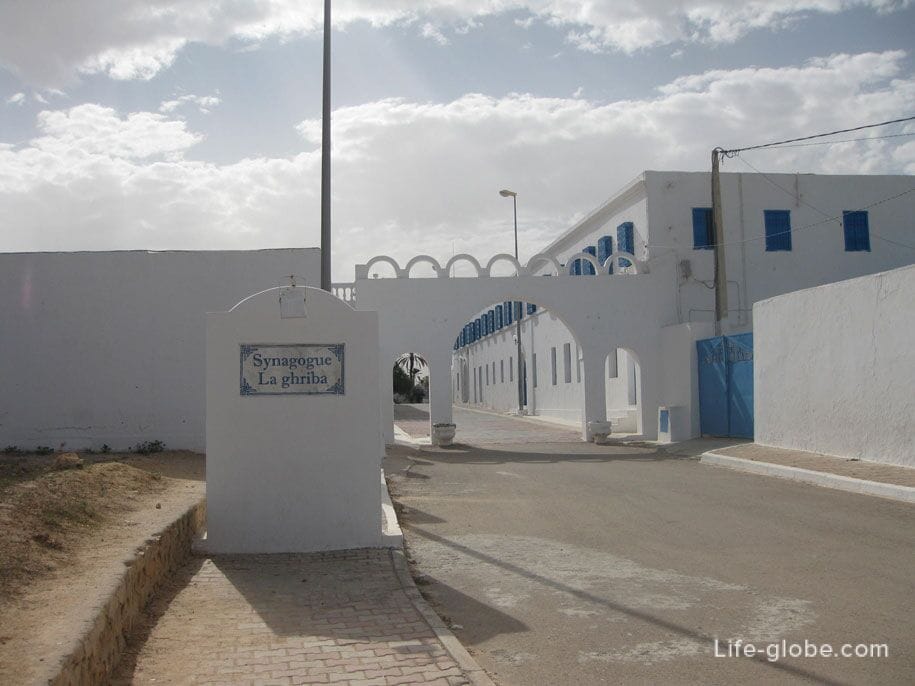
The size of the synagogue is also not impressive, the Shrine is very petite. Most of the territory is little room for accommodation of the pilgrims.
Entering the territory of the synagogue are between two white and blue buildings.
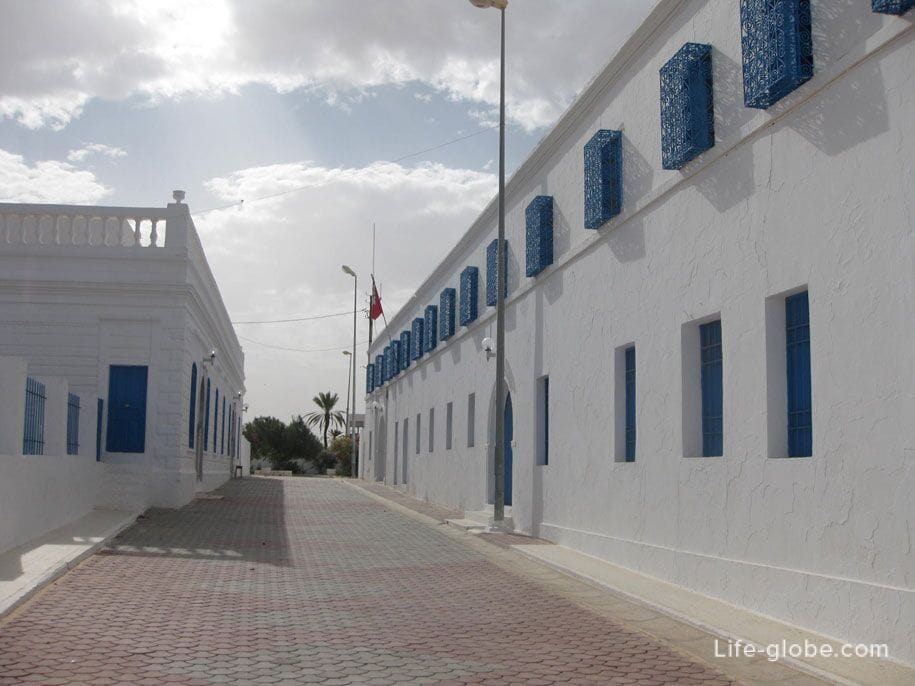
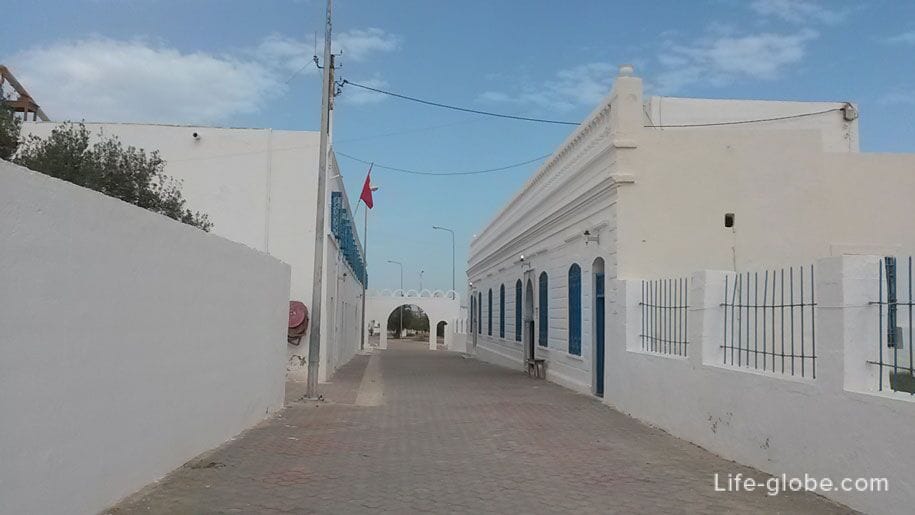

The building on the left is a small arched door near where you see the sign with the hours of operation of the synagogue. This is the gathering in the Shrine.
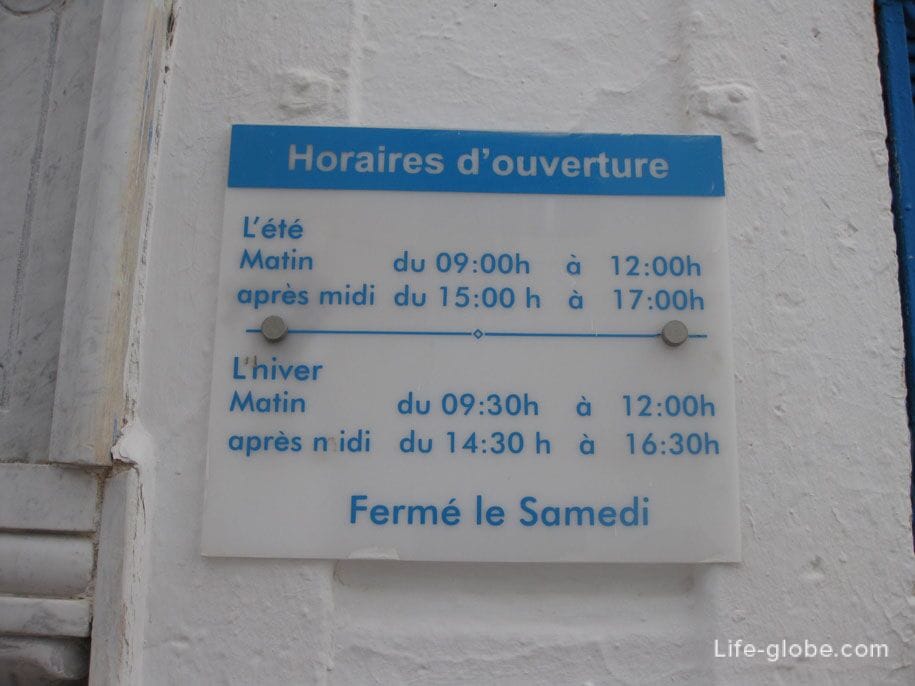
At the entrance to hand out shawls for women and for men piles. In General, to visit the synagogue, not recommended in too revealing clothing, shorts or short skirts. However, for tourists this rule as such does not apply, are allowed in any garment.

Once inside, we get to the first room. The hall is rectangular in shape and small in size, however, it immediately invokes awe. Here colorful arches and columns decorated with patterned tiles on the walls, stained glass Windows, dark brown wooden benches, designed for believers, the ceiling, which immediately attracts attention, from which hung a voluminous chandelier. Everyone in the room is tastefully decorated, rich and beautiful, but at the same time without pretentiousness and overkill.
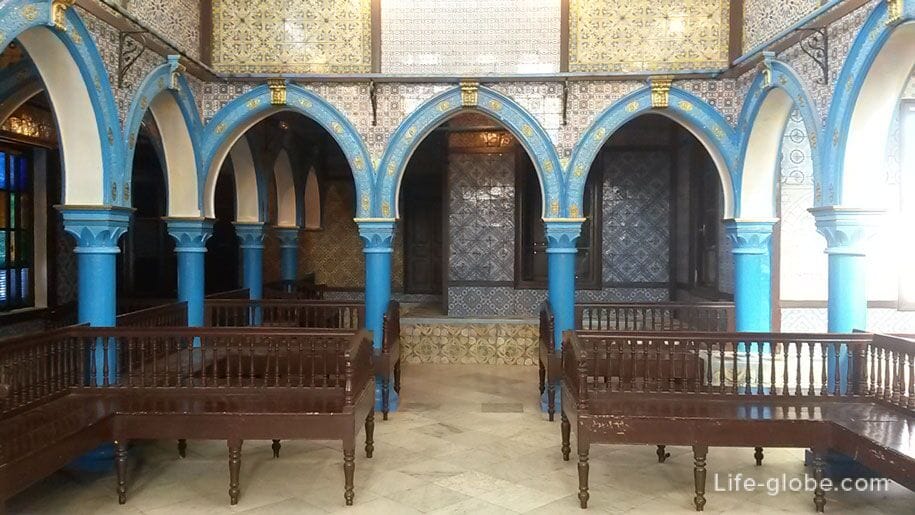
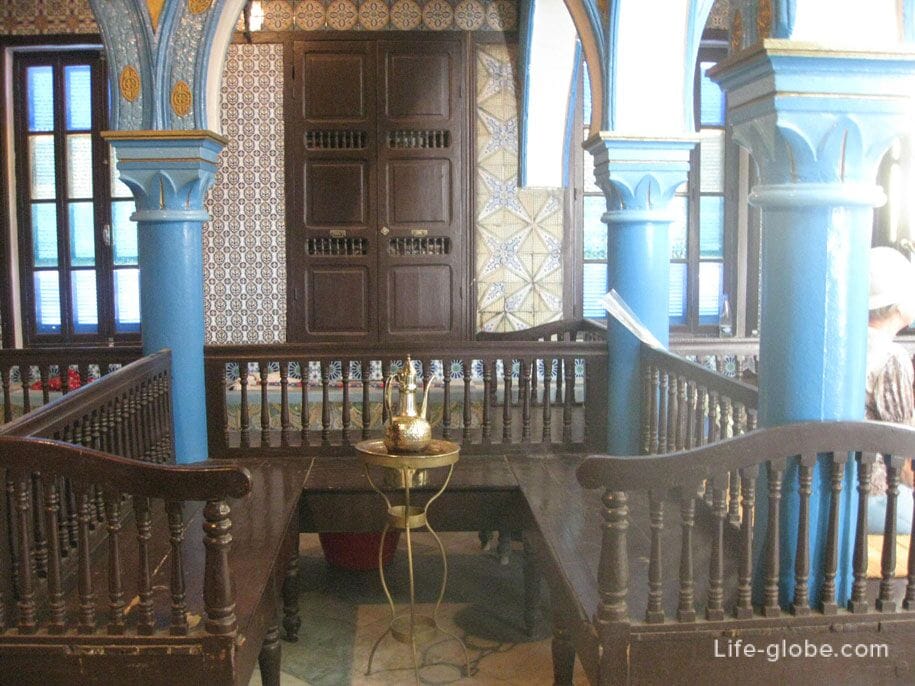
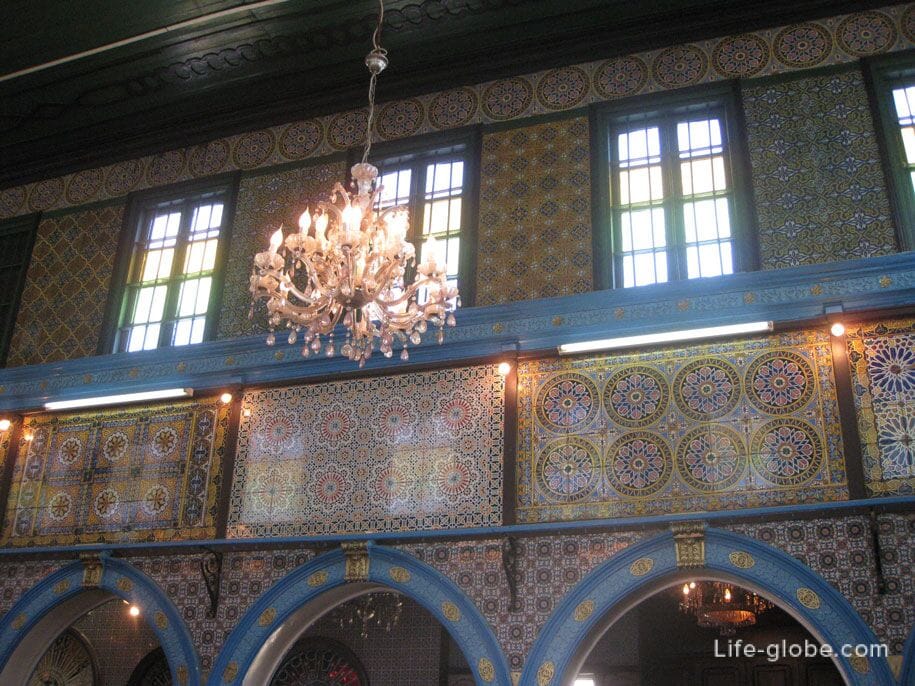

Next we pass to the second, main hall. Before entering the hall must remove their shoes. Floor is covered with mats.

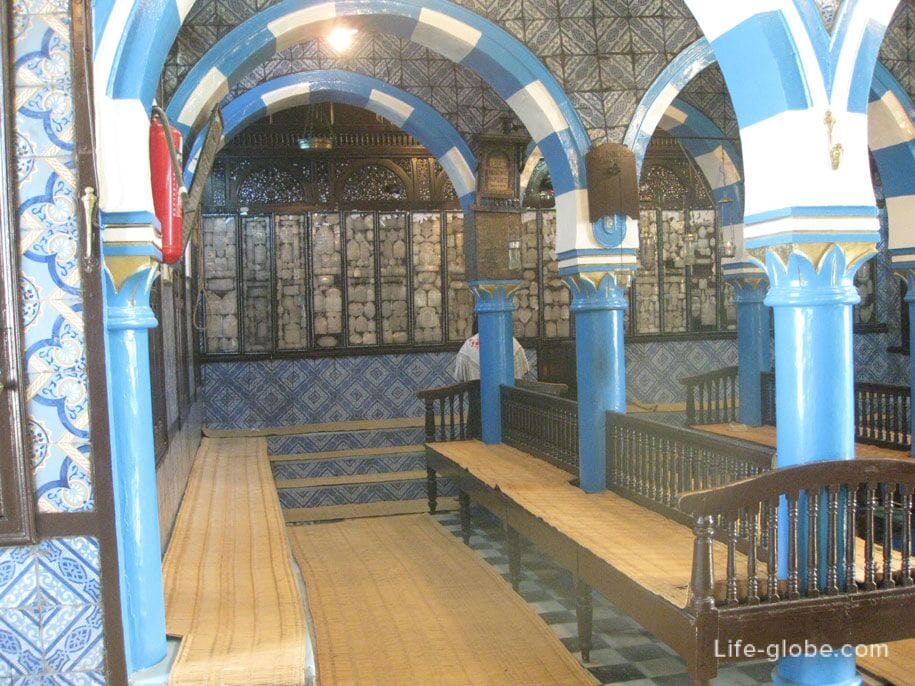
The entrance to the synagogue is free and free, however, optional 1-2 Dinar the superintendent is encouraged. Welcome, it is an understatement upon entering the room sits a man, and strongly, almost grabbing hands, requires 1 Dinar per person. For a Dinar, you can take a piece of paper or card (lie near the men), to write requests, requests. Leaflets and postcards it is better to take as soon as I paid the Dinar, otherwise, if you come later and say that already paid, the man will pretend to not understand anything, and will require payment again. If we had several such cases.
In this room there is a so-called "wailing wall", like the wailing Wall, located in Jerusalem, only in a very reduced size. In this wall you can leave notes with requests, prayers and wishes. On the wall you can see hundreds of commemorative silver plates, which for centuries was left here by pilgrims.

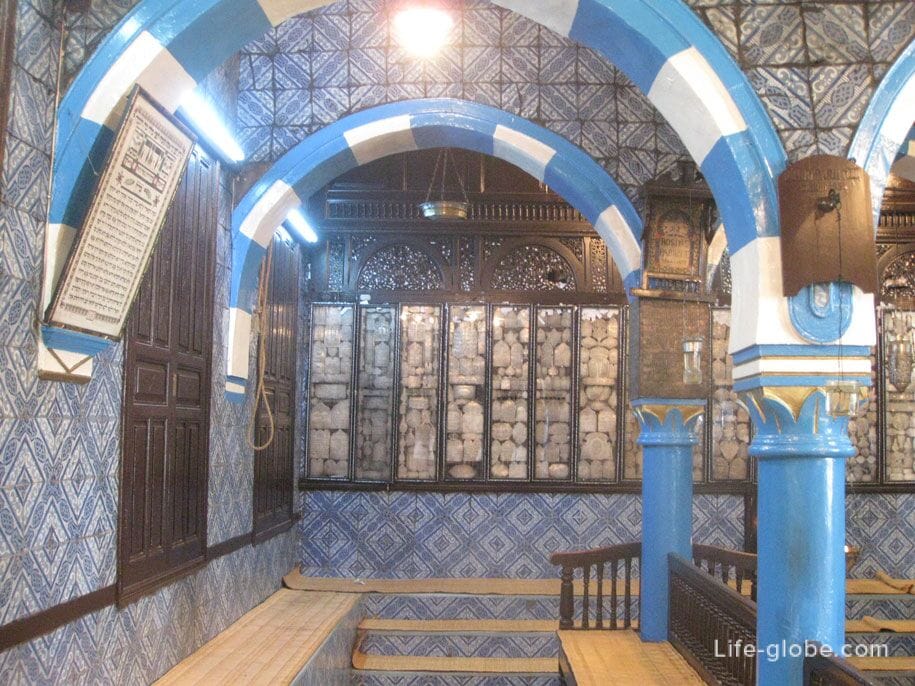

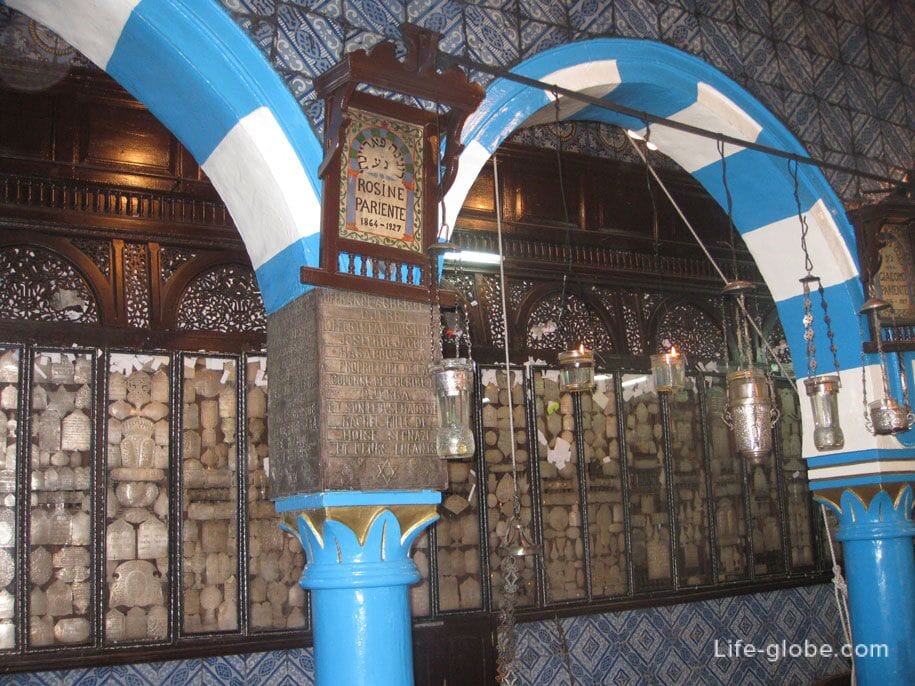
In the hall are rows of wooden benches, the pulpit and the many bookcases around the perimeter. That's the whole simple furnished small gerbeshi synagogue.


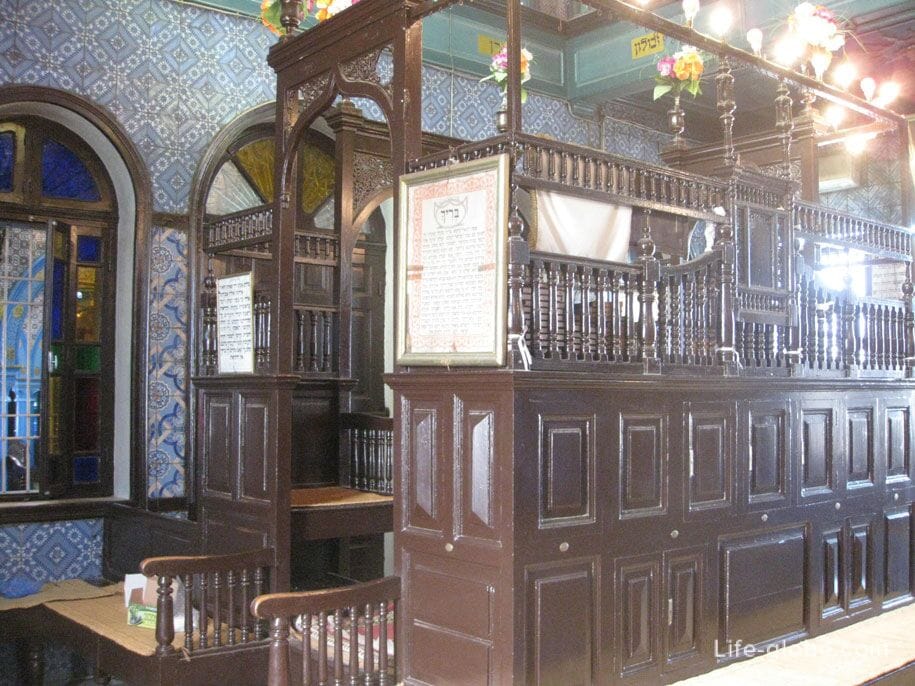
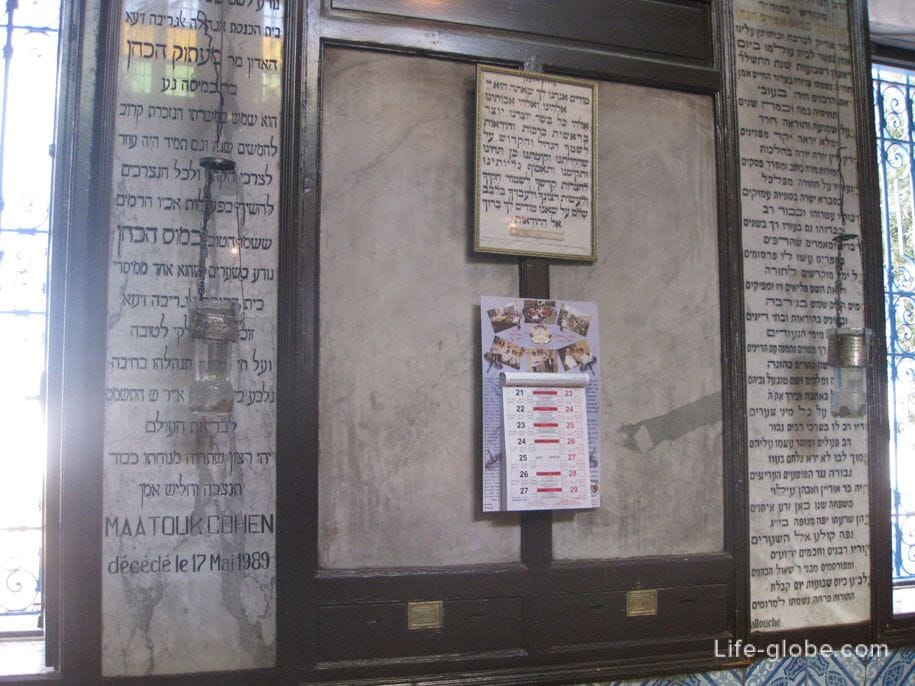

The main asset of the synagogue, among the old sacred books, is one of the world's oldest Torah Scrolls. In addition, the synagogue is the destination in North Africa annual pilgrimage for many Jews after the celebration of Passover. For these purposes, in the territory of the Shrine runs the hostel.
A big building of a hostel for pilgrims is located exactly in front of the temple. On the territory of the premises is also possible.
The courtyards of the dormitories, some of them clearly shows that they are no longer used for its intended purpose.
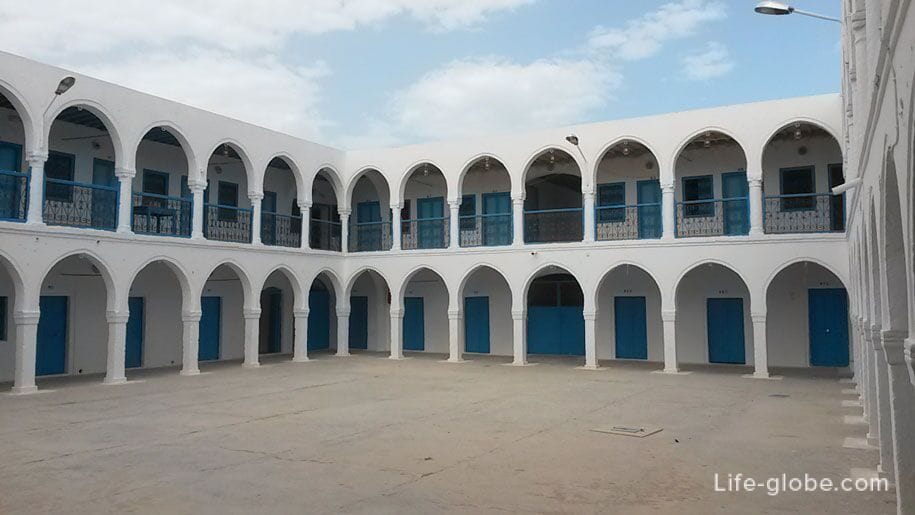
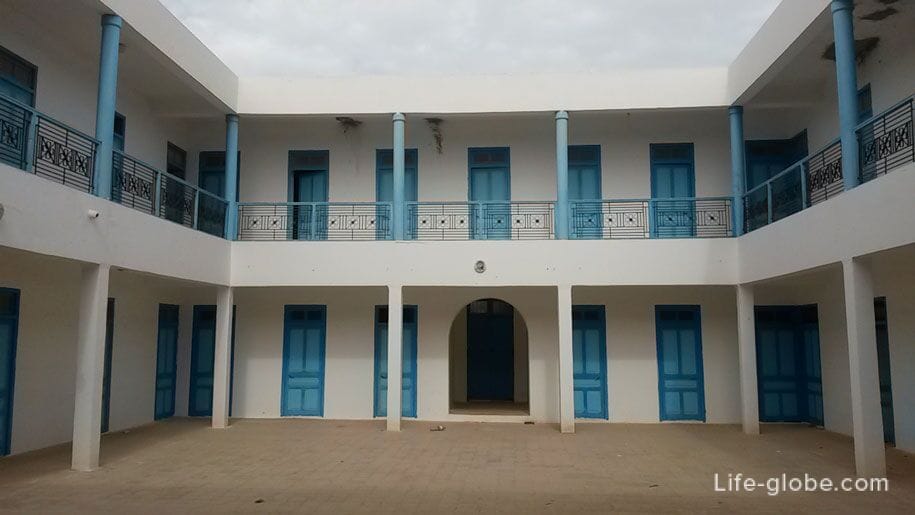
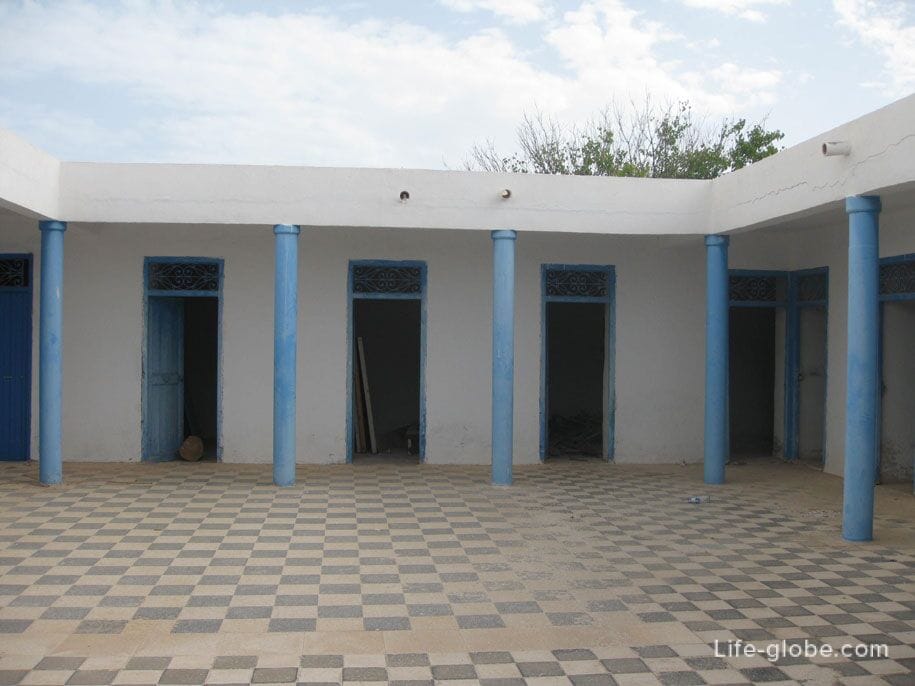

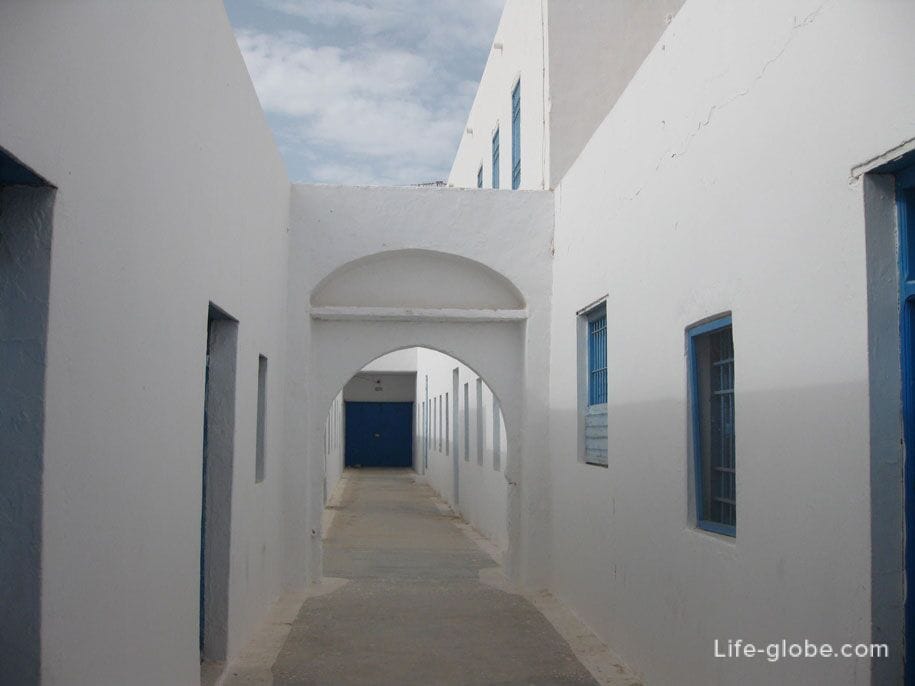
And there's little room for pilgrims. Tiny and old. Most of the rooms piled junk.
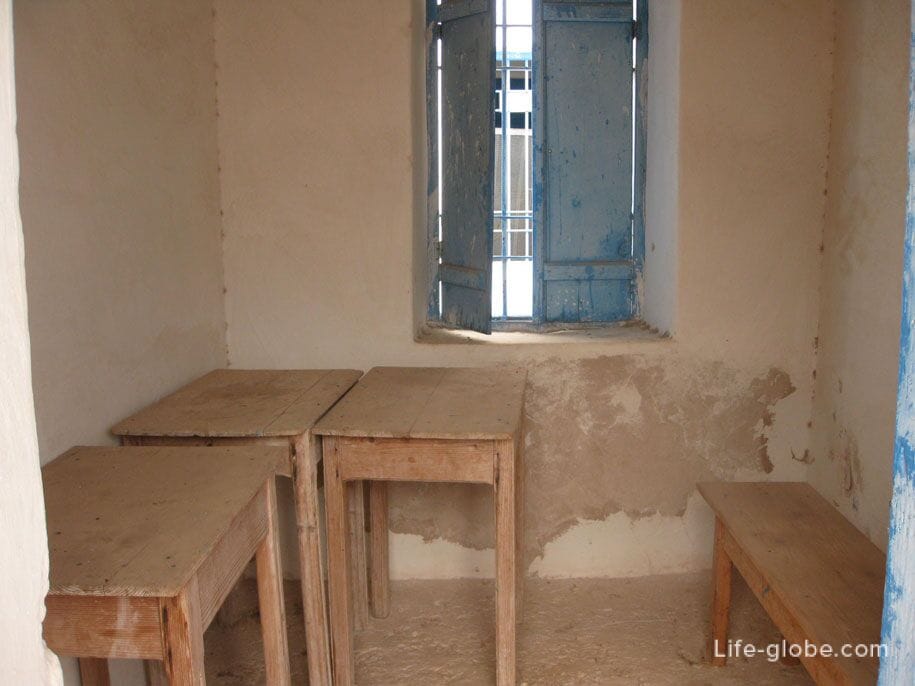




But public toilets and taps for washing, most of which are not working.

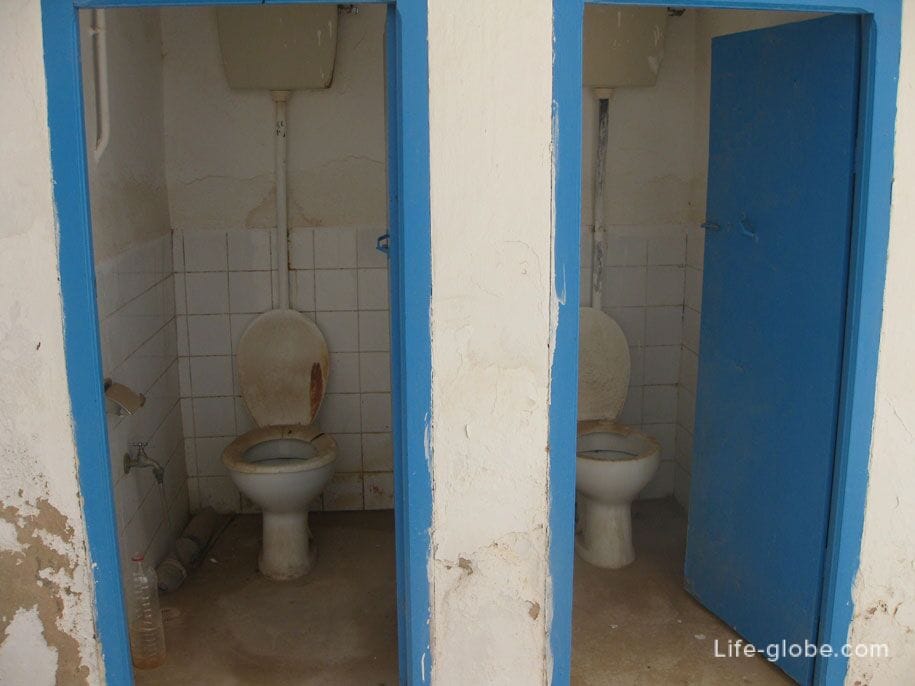

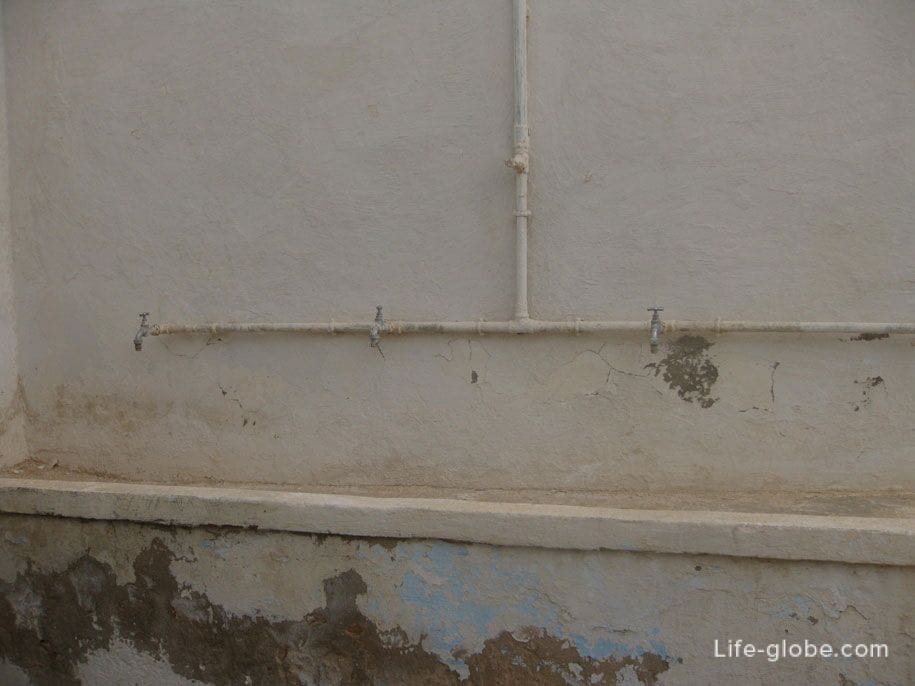

Kitchen, oven

Also at the synagogue, behind the main buildings are a small point guard and the cemetery, which is currently deserted.
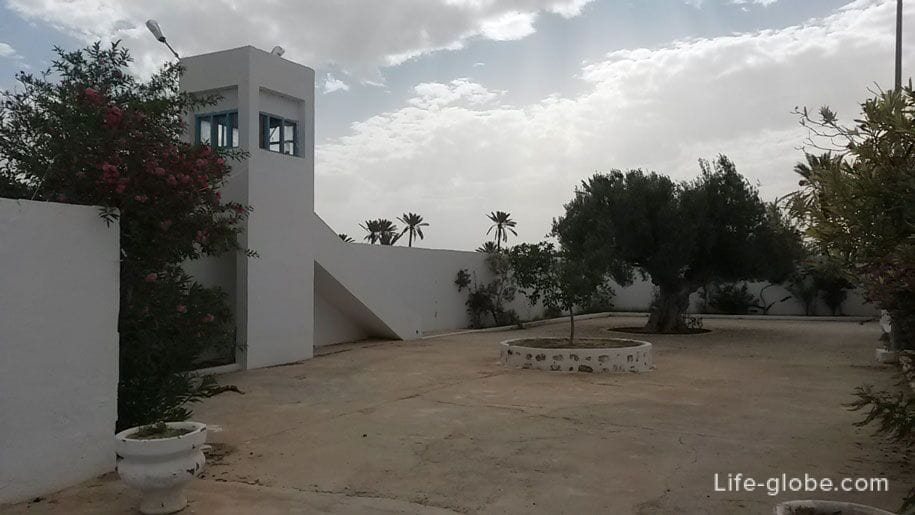

That's all domain, a small but quite interesting the saints and attractions of Djerba island, the synagogue, El ghriba.
If you come to the synagogue on their own, by taxi, then to go back, you will need to catch a taxi, and at the synagogue, you are unlikely to find free, as it is located on the outskirts of the village. The taxi driver who brought you to the synagogue can offer to wait for you while you visit the Shrine, citing a lack of taxis at the synagogue. Of course, he'll do it for a fee and will be partly right. But not to overpay and to catch the car on the way back, all you will need to walk from the synagogue to the center of the village a few hundred meters.
We did, at the same time, on the road, managed to see part of al-Riyadh, and even closer to the center of the village, taski rife.
And even took a few photos
